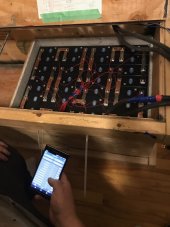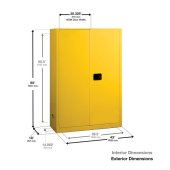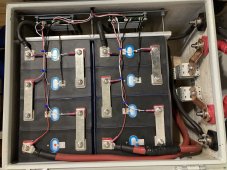I'm going to use one of these:
Truck Tool Box
Not sure how much I need it for LiFePO4 batteries, but I like the idea of using it.
I was going to mount the charge controller and inverter on the wall above it, but not I'm leaning toward spraying the inside of lid with some truck bed liner and just mounting the equipment to it. Then, remove the batteries, close the lid, and the whole thing is mobile... sorta.
Truck Tool Box
Not sure how much I need it for LiFePO4 batteries, but I like the idea of using it.
I was going to mount the charge controller and inverter on the wall above it, but not I'm leaning toward spraying the inside of lid with some truck bed liner and just mounting the equipment to it. Then, remove the batteries, close the lid, and the whole thing is mobile... sorta.






